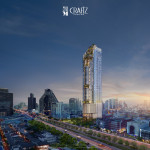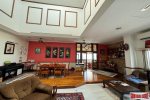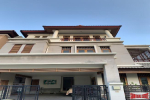2018/08/27 in Latest news - 28
The rise of the mixed use retail development in Thailand
In today’s world modern lifestyles are changing with technology and social evolution affecting our daily lives. This includes our living space and locations we choose to live. These changes have led to the rise of mixed-use projects in urban Southeast Asian countries.
According to Christian Olofsson, Shopping Centre & Mixed-Use Director of IKEA / Southeast Asia, the competitive climate of the retail industry has accelerated new ideas of incorporating non-traditional components into a retail complex. In a single site developers are consolidating retail into residential units, entertainment revenues and healthcare facilities.
Staying relevant and providing the current needs of today’s consumers is the objective of the major players. Higher return on investment is possible if the developer improves this opportunity and is able to better meet the needs of the modern consumer. This can be accomplished by utilizing mixed-use buildings, much better than single-use developers. This approach is less risky and comes with a greater assortment of revenue sources. It can also help average out the land costs by incorporating an assortment of different types of income.
Given the positives, IKEA decided to develop a mixed-use project – Mega City – next to Mega Bangna, Olofsson said.
Globally 451 tall buildings are currently listed under construction, according to a report by the Council of Tall Buildings and Urban Habitat. One third of these buildings are listed as mixed-use projects combining hotels, offices, residential units, service apartments and retail outlets. In Southeast Asia, excluding Thailand, there are 16 mixed-use projects that are currently under construction. Eight are located in Malaysia, five in Indonesia, and one each in Singapore, Vietnam and the Philippines.
The world’s leading institute on the inception, design, construction and operation of tall buildings is the Council on Tall Buildings and Urban Habitat. Headquarters in Chicago’s historic Monroe building, the institute was founded in 1969. The council is a non-profit organization with Asian headquarters at Shanghai’s Tongji University. There is also an academic office at the Illinois institute of Technology in Chicago and a research office at Iuav University in Venice. The institute aids in the exchanges of up-to-the-minute technologies for tall buildings through research, events, publications, web platforms, working groups and an extensive network of international representatives.
Large site developers need a variety of diversified income, said James Pitchon, head of Research and Consulting at CBRE Thailand. It’s very difficult to develop a single use project on a large site. This could result in an oversupply in the local market, either a residential or office project.
Busy consumers enjoy the idea of having a range of convenient facilities in one place. The ease of accessibility and climate control environment is very desirable to these consumers. Easy to reach retail and hotels in the same complex has a strong draw to office tenants, especially for the convenience of foreign visitors and customers.
Also, Pitchon remarked, Thais have a strong desire to live in a condo near where they work provided that the convenience comes with exclusivity and privacy.
According to a JLL research, the growth of mixed-use project in ASEAN (the Association of Southeastern Asian Nations) began to increase during the infrastructure development and consumers behavior changes in the region ASEAN celebrated their 50th anniversary last year and the entire region is getting ready for greater grown and investment.
Although already robust, Southeast Asia’s economies are projected to grow on an average of 5 percent per year until 2020. As the market size and demographics change, the real estate industry stands to benefit further given the logistics of real estate and retail. With the advancement of high-speed rail networks and upgrades in ASEAN infrastructure, the mixed-use projects will attract further development, especially projects connected or near the train stations, as in the case of Japan and Hong Kong, the research said.





